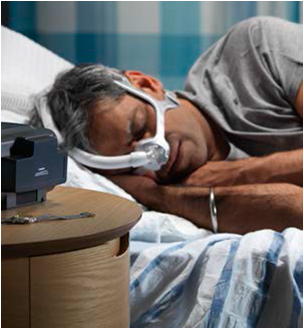The majority of these patients require non-invasive ventilatory support using a mask interface however, 38% require ventilatory support via a tracheostomy, at home.
Many of these patients have complex care needs and are located within rural locations of Hampshire, Dorset and surrounding areas, making hospital visits for a review of their ventilatory support, difficult.
The UHS team provide 24hour technical support for these patients in the event of mechanical failure however, they are not funded for full domiciliary reviews, where patients can be assessed and ventilator settings can be changed, in the home environment.
The use of remote monitoring in home ventilation is evolving and enables the clinician to remotely view the ventilation data from each patient and change ventilator settings in a timely fashion, without the need for the patients to visit the hospital clinics.
This project evaluated the use of remote monitoring for a small cohort of patients referred to UHS for home long-term ventilatory support.
The service relies upon a web-based cloud system that the clinician is able to access and view the data sent from each patient’s ventilator.
The early results from this project suggest that the remote monitoring system has enabled patients to stay in their own home whilst a clinician can evaluate ventilator requirements and adjust ventilator settings from the clinical environment.
This has greatly improved patient experience in that patients often with complex needs are no longer required to attend several hospital visits to adjust ventilator settings.
This has also released clinic appointments for those new patients awaiting assessment for home mechanical ventilation and prevented hospital admissions.

